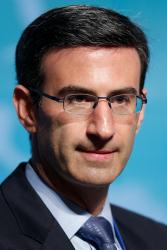Over the past two decades, state financing of higher education has declined as a share of personal income. State appropriations have fallen from an average of roughly $8.50 per $1,000 in personal income in 1977 to an average of about $7.00 per $1,000 in personal income in 2002. Tuition increases have only partially offset the decline in state appropriations in allowing public institutions to keep up with private ones. As a result, educational spending per full-time equivalent student has declined at public institutions relative to private institutions, from about 70 percent in 1977 to about 58 percent in 1996.
In Kane, Orszag, and Gunter (2003), we examine the causes of the decline in state higher education appropriations, with particular attention to expansions in Medicaid costs and interactions with the business cycle. The purpose of this paper is to document the troubling signs that the resultant relative decline in spending per student at public universities may be exerting an adverse effect on the quality of faculty, students, and education delivered at public institutions. Various observers of higher education have noted a decline in the perceived and real quality of public higher education in recent years.
Since roughly three-quarters of college students are enrolled at public institutions, any decline in the quality of the nation’s public universities could have troubling implications. Indeed, to the extent that the quality of public higher education affects macro-economic performance, income inequality, and social well-being, the consequences may be considerable. Recent media reports have also started to identify the broader consequences of funding restrictions at public universities as a substantial concern. We discuss alternative ways of financing public higher education to attenuate such adverse consequences.
A reduction in spending need not translate into a proportional reduction in quality, if institutions were somehow becoming more efficient (that is, were able to maintain the same absolute level and quality of educational services delivered at lower cost). As a result, it is difficult to draw any conclusions about the absolute quality of higher education in the United States. In this paper, we focus instead on the relative quality of public and private institutions. Our approach is to examine a wide variety of indirect proxies for “quality,” in the hope that a consistent story from a number of admittedly imperfect indicators will prove to be insightful.
This paper has five sections. In the first section, we document the reduction in relative spending per student and explore some broad indicators of the implications for quality at public universities. In the second section, we examine trends in faculty conditions at public and private universities. In the third section, we explore data on the relative selectivity of public universities. In the fourth section, we present survey data from faculty on their perceptions of the quality of undergraduate education at their institutions. In the fifth section, we discuss projected trends in state appropriations, the implications for public universities, and policy responses.




